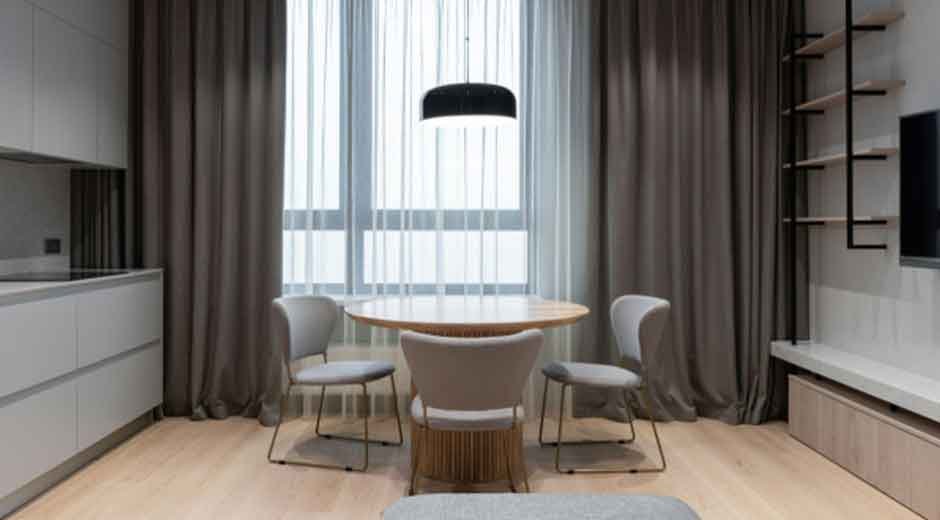Living in a small home or apartment has its perks—less to clean, lower energy bills, and a cozy feel that’s hard to beat. But it can also be tricky. You might feel like you’re always out of storage or struggling to make a tight layout work for your day-to-day life. Still, there’s good news, with SGI Property Management Solutions Dallas noting that you don’t need a huge renovation or a massive budget to make a big difference.
With a few smart upgrades, even the smallest spaces can become more open, functional, and enjoyable. These seven home improvements are simple, effective, and perfect for making the most of what you’ve got.
1. Create Comfort Zones with Smart Climate Solutions
omfort should be a top priority in any space, no matter the size. But small homes often face uneven heating and cooling. One room might be too hot while another feels chilly. That’s where focused climate control can help.
Mini ductless systems are a great option for homeowners who want reliable comfort without the hassle of major renovations. These units give you control over individual rooms, so you can set different temperatures in different zones. They’re compact and don’t take up much space, which makes them ideal for smaller homes or apartments.
You can find plenty of affordable ductless mini split systems that are energy-efficient, easy to install, and built for long-term use. Another benefit? You only run the units you need. That helps lower energy bills while still keeping every area comfortable. They’re also quiet and easy to maintain. You don’t need to make space for big vents or lose wall space to a bulky window unit.
2. Add Built-In Storage to Unused Spaces
Storage is one of the biggest challenges in small homes. But chances are, you’ve got more space than you think—you just haven’t used it yet. Look at the areas under stairs, around doorways, or beneath windows. These spots often go untouched.
Built-in storage works well because it blends into your existing layout. Instead of adding more furniture, you build it into what’s already there. You can add drawers, shelves, or cubbies that match your walls and don’t take up extra floor space.
For example, a built-in bench with storage underneath is perfect for an entryway or kitchen nook. Open shelving between wall studs can create a nice spot for towels or books.
3. Upgrade to Multifunctional Furniture
If your space is tight, your furniture should do more than one job. That’s where multifunctional pieces shine. They save room and keep your home feeling open and uncluttered.
Think storage ottomans, wall-mounted desks, fold-out tables, or even Murphy beds. These designs help you adapt your space to different needs throughout the day. A small dining table with hidden leaves can go from two seats to six in seconds. A sofa bed can turn your living room into a guest room when needed.
Furniture like this isn’t just smart—it’s stylish too. Many modern pieces come in simple, clean designs that fit right into any decor.
4. Open Up with Better Lighting
Lighting plays a huge role in how your home feels. Dark corners make a room feel smaller, while bright, even lighting makes everything look bigger and more welcoming. Luckily, this is one of the easiest upgrades you can make.
Start by adding more light sources. Use wall sconces instead of floor lamps to save space. Install under-cabinet lights in the kitchen or bathroom to make your workspaces easier to use.
Mirrors are another smart trick. Hang one across from a window to reflect natural light and create the illusion of more space. Even a few small changes to your lighting can help your home feel fresh, open, and more comfortable to be in.
5. Choose Pocket or Sliding Doors
Swinging doors take up more space than you think. They need room to open and close, which can limit how you use nearby areas. In small homes, every inch matters.
Pocket doors slide into the wall, saving valuable space. They’re great for bathrooms, closets, or tight hallways. If a pocket door isn’t an option, consider a sliding barn door. It mounts on the outside of the wall and gives you the same space-saving benefits.
These doors also add a modern, clean look to your home. They’re simple to operate and available in a range of materials to match your style. Replacing a few traditional doors with pocket or sliding ones can free up space and make your layout feel less cramped.
6. Use Vertical Wall Space
When you’re short on floor space, the walls are your best friend. Vertical storage lets you keep things organized without taking up room where you walk or sit.
Install floating shelves or tall bookcases to store books, plants, or decor. In the kitchen, hang pots and utensils on a pegboard. In the bathroom, use wall-mounted baskets for towels and toiletries.
Over-the-door organizers can help too. They’re easy to add and don’t require drilling holes. By keeping items off your counters and floors, you’ll create a cleaner, more open look.
7. Refresh with Light Paint Colors and Simple Decor
Paint is one of the easiest and cheapest ways to update your home. Light, neutral colors make rooms feel bigger and more open. Whites, soft grays, and warm beiges are all great picks. They reflect light and give your space a fresh, clean feel.
When choosing decor, less is more. Stick to a few patterns or textures you love, and repeat them throughout the room. This creates a sense of flow and keeps the space from feeling crowded.
Try not to over-decorate. Instead of filling every wall or shelf, leave a little breathing room. That balance makes your space feel intentional, not cluttered.
Living small doesn’t mean living without comfort or style. With the right updates, your home can feel bigger, work better, and reflect your lifestyle. From smart storage and furniture to better lighting and efficient climate control, these improvements help you enjoy your space every day.
Start small. Pick one idea that fits your home and give it a try. Over time, these changes add up—and you’ll love how your home feels once they do.






Leave a Reply